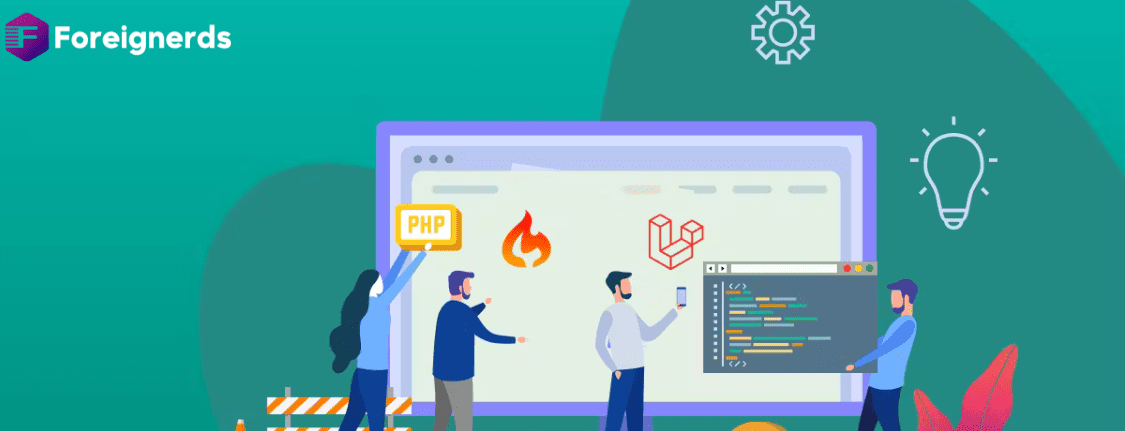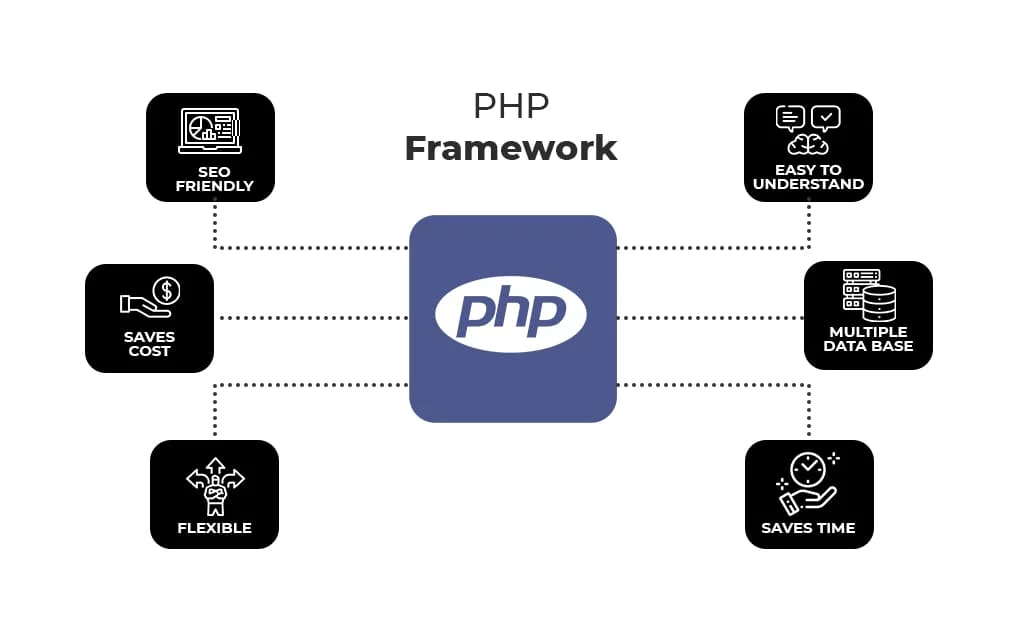In the dynamic world of web development, PHP remains a powerhouse, with giants like Facebook and Wikipedia relying on it. This article dives into the realm of PHP frameworks, exploring what they are, why developers opt for them, and a rundown of the most popular ones.
Understanding PHP Frameworks
What Is a PHP Framework?
Faster Development
-
- Utilize built-in tools like CakePHP’s Bake command-line tool for rapid code generation.
- Integration of PHPUnit in several frameworks facilitates easy testing.
Less Code to Write
-
- Leverage built-in functions, reducing the necessity for extensive original code.
Libraries for Common Tasks
-
- Access pre-built functions for tasks like form validation and CRUD operations, enhancing efficiency.
Follow Good Coding Practices
-
- PHP frameworks enforce clean code organization and coding best practices.
- Maintainability is enhanced through directory structuring and naming conventions.
More Secure Than Writing Your Own Apps
-
- Mitigate common PHP security threats through built-in features of frameworks.
- Data sanitization and defenses against cross-site scripting and SQL injection attacks.
Better Teamwork
-
- Set clear ground rules for projects, ensuring documentation, design decisions, and code standards.
- Facilitate collaboration, even for developers unfamiliar with the framework.
Easier to Maintain
-
- Encourage code refactoring and DRY development, reducing maintenance efforts.
- Framework developers handle core maintenance, easing the burden on individual developers.
What You Need to Know Before Using a PHP Framework
Key Prerequisites
PHP Proficiency
-
- A solid command of PHP, preferably version 7.2 or later, is essential.
- Familiarity with object-oriented PHP is a must, including concepts like classes, objects, and inheritance.
Database Knowledge
-
- Understand databases, SQL syntax, and Object-Relational Mapping (ORM) models.
- Each PHP framework has specific supported databases.
Server and Local Development Understanding
-
- Familiarity with web servers (e.g., Apache, Nginx) and configuring files for optimal app performance.
- Knowledge of local development environments, including localhost and virtual environments like Vagrant.
Model View Controller (MVC) Architecture
-
- Comprehend the MVC design pattern, separating data manipulation, presentation, and user interaction.
Command-Line Interface (CLI) Usage
-
- Proficiency in using the command line, essential for frameworks like Laravel with Artisan Console.
- Understanding of Composer, the PHP package manager, for frameworks like Yii.
What Should You Look for in a PHP Framework?
Choosing the Right Framework
Consider the following factors when selecting a PHP framework for your project:
Learning Curve
-
- Opt for frameworks with manageable learning curves, especially for beginners.
- PHP’s popularity makes it an accessible language for learning.
Technical Requirements
-
- Ensure the framework aligns with your project’s PHP version, extensions, and database support.
- Balance features based on project needs, avoiding overly complex frameworks for simple projects.
Feature Balance
-
- Assess features like testing, cache storage, templating engines, and security based on project requirements.
- Choose frameworks that support scalability if needed.
Documentation and Support
-
- Prioritize frameworks with comprehensive documentation and active community support.
- Vibrant communities contribute to long-term framework viability.
The Best PHP Frameworks Today
Here’s a snapshot of some of the most prominent PHP frameworks:
Laravel
- Launched: June 2011
- Current Version: 8 (released on September 8th, 2020)
- Pros: Laravel Homestead for easy setup, robust security features, and a vibrant community.
- Who Uses It: Vogue, Ascot, Restaurants.com.
Symfony
- Launched: October 2005
- Current Version: 5.1.4
- Pros: Excellent scalability, broad database support, and professional support from Sensio Labs.
- Who Uses It: Sainsbury’s Magazine, Sony VAIO UK site, Nobel Peace Prize.
CodeIgniter
- Launched: February 2006
- Current Version: 4.0.3
- Pros: Known for speed, lightweight footprint, and flexibility supporting both MVC and non-MVC development.
- Who Uses It: G-Shock, Buffer, Casio.
Zend Framework / Laminas Project
- Launched: March 2006
- Current Version: 3.0.0 (Zend) or 1.3.0 (Laminas)
- Pros: Follows PHP-FIG standards, supports RESTful APIs, and has commercial backing from Sensio Labs.
- Who Uses It: BBC, BNP Paribas, Cisco Webex.
Yii (Framework)
- Launched: December 2008
- Current Version: 2.0.35
- Pros: Quick setup, robust security measures, and Gii code generator for efficient code creation.
- Who Uses It: Crowdcube, WordCounter, Purple.
CakePHP
- Launched: April 2005
- Current Version: 4.1.1
- Pros: Minimal configuration, inbuilt ORM, and security features for encryption and CSRF protection.
- Who Uses It: Visit NC, 10 Fast Fingers, Coconala.
Slim
- Launched: September 2010
- Current Version: 4.5.0
- Pros: Lean codebase, ideal for small apps and APIs, easy to learn and understand.
- Who Uses It: Top Web Comics, Canine Principles, CG Forge.
Phalcon
- Launched: November 2012
- Current Version: v5
- Pros: Built for speed with a low-level architecture, compiled code for faster execution, and a memory-resident approach.
- Who Uses It: Learny Online, Outsmart, Marchi Auto.
FuelPHP
- Launched: June 2011
- Current Version: 1.8.2
- Pros: Supports HMVC, flexible project structure, and robust security features.
- Who Uses It: Wan Wizard, Front Desk, Barracuda.
Fat-Free Framework
- Launched: 2009
- Current Version: 3.7.2
- Pros: Lightweight codebase, modular architecture, and easy to pick up for beginners.
- Who Uses It: Malwarebytes, Udemy, Livraria Cultura Bomtagem.
Conclusion
Selecting the right PHP framework depends on your project’s specific needs, your team’s expertise, and the framework’s community support. Whether it’s Laravel’s elegance, Symfony’s scalability, or CodeIgniter’s speed, each framework brings something unique to the table. As you embark on your web development journey, dive into the vast world of PHP frameworks, and let them empower your projects with efficiency and scalability.

